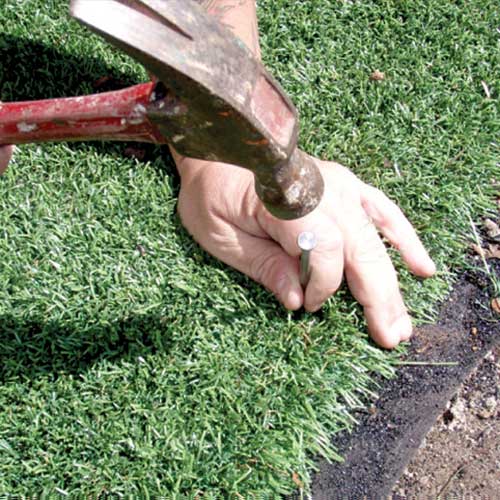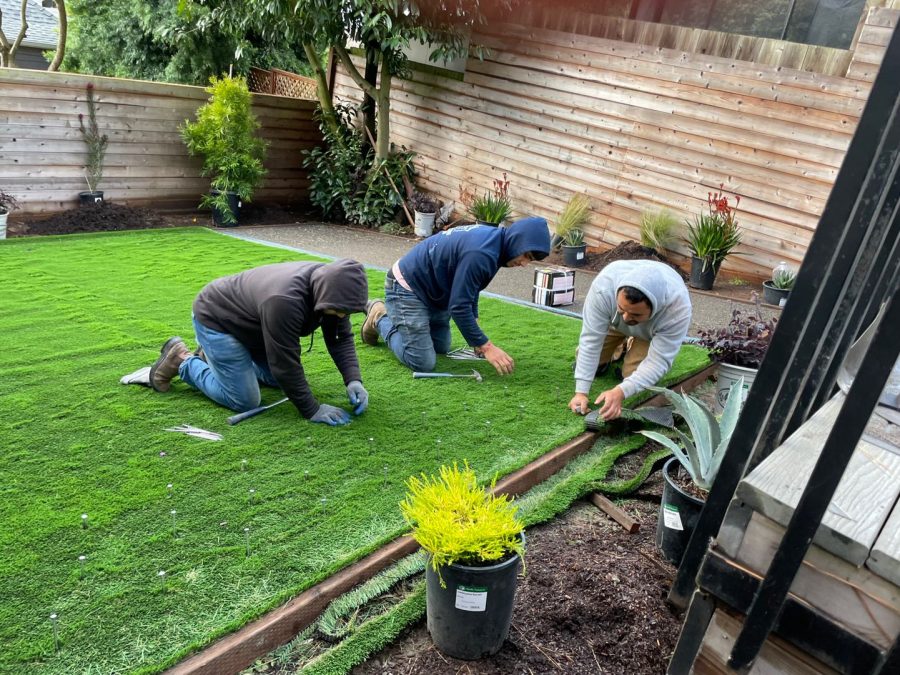See Why Homeowners Prefer Artificial Turf for Sustainable Landscape Design Practices
As homeowners increasingly prioritize sustainability in landscaping, synthetic grass has become an engaging choice to typical grass. Its ability to conserve water, reduce upkeep efforts, and minimize environmental impact positions it as a practical selection for those looking for environment-friendly options. The aesthetic appeal and versatility of artificial lawn provide to diverse design choices. Nonetheless, the ramifications of this shift expand past simple benefit and aesthetic appeals, triggering a closer exam of exactly how these choices affect more comprehensive environmental outcomes. What continues to be to be checked out is the complete scope of advantages that synthetic grass can supply to property owners and the setting alike.
Water Preservation Benefits
One of the most significant advantages of synthetic grass is its function in water conservation. In contrast, artificial turf removes this need totally, as it does not require watering.
In addition, the installment of fabricated lawn can add to an extra lasting landscape. Homeowners can significantly reduce their water bills, permitting reallocation of sources to other ecological initiatives or house uses. In addition, synthetic grass is developed to hold up against numerous weather problems without the need for additional watering, making it an optimal choice for areas dealing with water scarcity.
The ecological benefits expand past immediate water financial savings. By minimizing water consumption, fabricated lawn assists to mitigate the influences of climate adjustment, protecting essential environments that are endangered by excessive water removal. As lasting landscaping techniques acquire grip, synthetic grass becomes a responsible option for homeowners seeking to develop green exterior rooms.
Reduced Upkeep Initiatives
Fabricated grass dramatically decreases upkeep initiatives contrasted to conventional lawn lawns. With man-made yard, homeowners can get rid of the taxing jobs related to natural landscape design, such as mowing, feeding, and weeding. This not just saves important time however additionally lowers physical labor, making lawn care obtainable for people of every ages.
Traditional lawns call for regular cutting to maintain an aesthetically pleasing elevation, whereas man-made turf continues to be regularly lush without the need for cutting. In addition, homeowners no longer need to apply pesticides or plant foods, which are typically required to maintain all-natural grass healthy and balanced.
Moreover, man-made turf is resilient and durable, calling for minimal upkeep past periodic brushing and rinsing to get rid of debris. This simplicity of upkeep permits home owners to enjoy their exterior spaces without the continuous fear of maintenance, supplying more time for leisure and family members tasks. Eventually, the decreased upkeep initiatives connected with artificial lawn make it an attractive alternative for those seeking a low-maintenance, aesthetically appealing landscape.

Ecological Impact Decrease
There is a growing acknowledgment of the environmental benefits related to man-made turf, especially in regards to water conservation and minimized chemical usage. click here for info Conventional grass require considerable quantities of water, especially in drought-prone areas, leading to enhanced pressure on regional water sources. In contrast, man-made lawn eliminates the requirement for watering, significantly minimizing water usage and advertising sustainability.
Furthermore, standard lawn maintenance usually involves the application of herbicides, fertilizers, and pesticides, which can add to soil and water pollution. Man-made grass minimizes this ecological threat by requiring very little maintenance and basically removing the demand for harmful chemicals. This not only enhances dirt wellness however likewise secures regional environments from hazardous overflow.
Additionally, the manufacturing of natural yard yards our website commonly entails the usage of nonrenewable fuel sources for mowing and landscaping tools, more adding to greenhouse gas exhausts. By picking artificial grass, house owners can significantly reduce their carbon impact connected with yard care tasks.
Aesthetic Appeal and Flexibility
In enhancement to its environmental benefits, synthetic grass offers substantial visual charm and convenience for landscaping. Property owners can achieve a rich, environment-friendly appearance year-round, getting rid of the seasonal fluctuations frequently related to all-natural grass. This regular visual not just boosts the visual allure of a residential property but additionally adds to a well-maintained and refined appearance.
Additionally, synthetic grass is offered in a range of colors, styles, and appearances, permitting for personalization to match individual choices and design motifs - Arizona artificial turf. Whether made use of in household gardens, industrial spaces, or leisure areas, it can effortlessly incorporate into diverse landscape design designs, from modern minimalist to lavish exotic setups
The versatility of fabricated lawn extends past plain look; it can be set up in various areas, consisting of rooftops, patio areas, and also interior spaces, producing opportunities for distinct landscaping services. Furthermore, it is ideal for an array of tasks, from kids's play areas to pet-friendly atmospheres, supplying capability without endangering style.
Inevitably, the aesthetic charm and flexibility of synthetic grass make it an appealing alternative for homeowners looking for sustainable landscaping services that do not compromise beauty for ecological obligation.

Long-Term Cost Savings
One of the most engaging benefits of artificial lawn is its possibility for lasting price savings. Unlike natural lawn, which needs regular maintenance-- consisting of mowing, watering, feeding, and insect control-- artificial grass dramatically reduces these continuous expenses.
Additionally, synthetic grass has a lifespan of 15 to 25 years, relying on its high quality and usage. This next resilience minimizes replacement prices, making it an extra affordable choice over time. The initial investment in man-made lawn can frequently be recouped through the cost savings built up over time.
While the ahead of time expense might seem higher compared to turf setup, the advancing financial savings from decreased upkeep and water use frequently outweigh these first expenditures. Inevitably, the adoption of fabricated turf not only promotes a lasting landscape design option however additionally provides property owners an economically wise choice that straightens with long-lasting budgeting objectives.
Verdict
Fabricated turf emerges as a compelling alternative for lasting landscaping, using significant advantages in water conservation, decreased upkeep efforts, and lessened ecological influence. As areas significantly focus on eco pleasant practices, the fostering of fabricated turf stands for a dynamic step toward achieving sustainable and resilient landscapes.
Additionally, synthetic grass is developed to hold up against various climatic conditions without the demand for additional watering, making it an optimal selection for regions encountering water scarcity. (Arizona turf)

Man-made turf arises as a compelling choice for lasting landscaping, using substantial benefits in water conservation, decreased upkeep efforts, and diminished ecological influence.